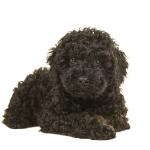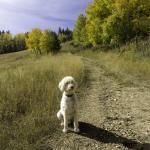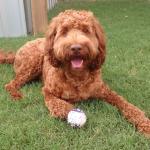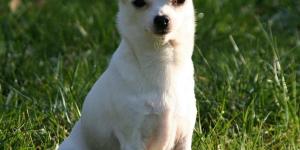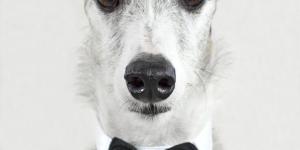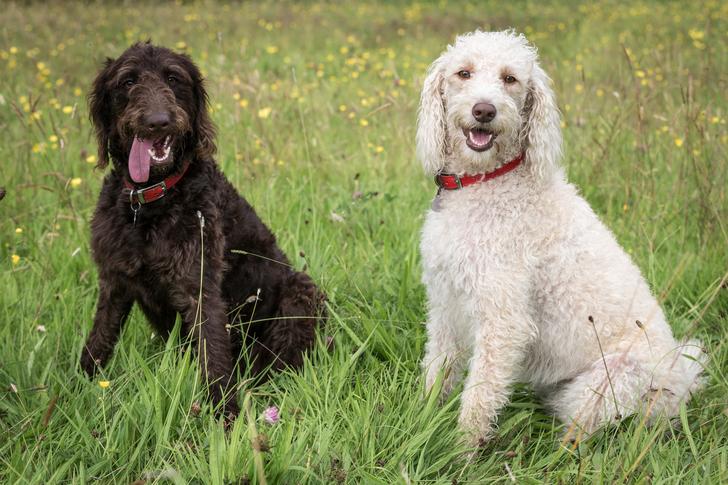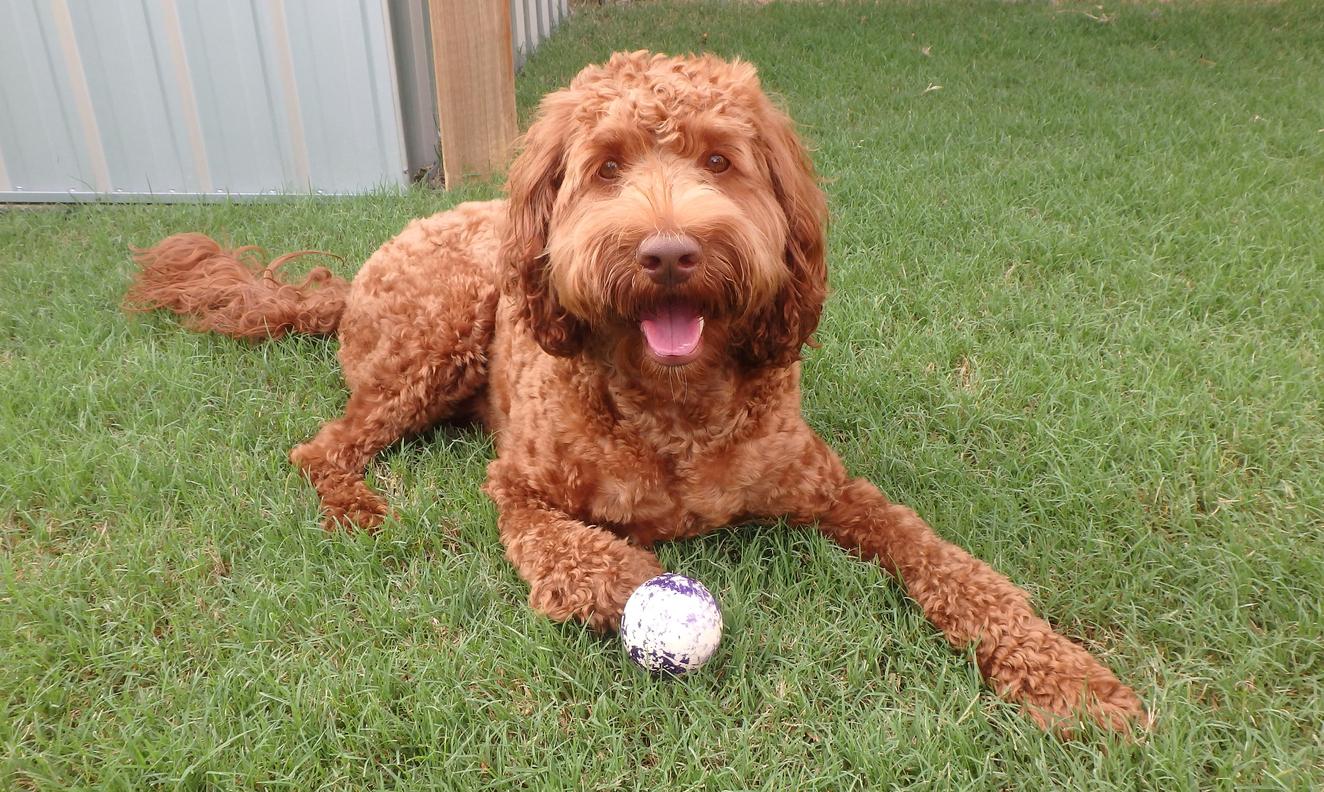Labradoodle

The Labradoodle is a cross between a Labrador Retriever and a Miniature or Standard Poodle. Although not officially considered a breed by any major dog expert organization, like the FCI, their popularity has warranted them an AnimalWised breedfile. Like the labradoodle’s parents, they are usually highly intelligent,friendly and quite active. Their curly or shaggy coat demands a lot of attention, so we will elaborate on their necessary care, and plenty more. Are you enticed by the adorable labradoodle? We don’t blame you. Let’s get into everything you need to know.
- Australia
- Australia
- 5-14
- 14-18
- 18-22
- 22-27
- 27-31
- More than 31
- 2-7
- 7-22
- 22-55
- 55-100
- 100-220
- 8-10
- 10-12
- 12-14
- 15-20
- Low
- Meidum
- High
Origin
The Labradoodle came to be in 1988, when Australian breeder Wally Conron crossed the beloved Labrador retriever and the fashionable Standard poodle at the Royal Guide Dogs Associations of Australia in Victoria.
His aim was to combine the poodle’s low-shedding coat with the gentle demeanor of the Labrador retriever, in order to create a hypoallergenic guide dog.
Although Guide Dogs Victoria no longer breed labradoodles, they are bred by other guide and assistance dog organizations in Australia and other places. The Association for the Blind of Western Australia has introduced labradoodles into their training program and the breed is widely used around the world as guide, assistance, and therapy dogs. As well as, of course, great family dogs.
Conron has repeatedly stated he regrets being responsible for creating this fashionable crossbreed when the crossing has generated more problems. He said he was to blame for "creating a Frankenstein", adding that problems were being bred into the dogs rather than breeding away from problems.
Physical Characteristics
The gorgeous labradoodle is known for their endearing curly coat and floppy ears, similar to that of their parent the poodle. They can either look quite shaggy, like a retriever, or have loose curls like a poodle. Many are a combination of both.
They come in different sizes depending on the size of the poodle during the first generation breeding, but most commonly, they are between 14 to 24 inches at the withers. As for their weight:
- The Standard Labradoodle should be 22 to 24 inches in height for a male and 21 to 23 inches in height for a female, while both can range in weight from 50 to 65 pounds.
- The Medium Labradoodle should be 18 to 20 inches high for a male and 17 to 19 inches high for a female, with both weighing from 30 to 45 pounds.
- The Miniature Labradoodle should be between 14 to 16 inches and 15 to 25 pounds.
Labradoodles come in a wide variety of colors. They can be gold, apricot, caramel, chalk, black, red, cream, chocolate, silver, parchment, and blue. They can also have parti-colored coats, which consist of brindles, phantom, patched, or sable colors.
Temperament
A labradoodle's temperament depends on many factors, one being the personality of their parents - in particular their mother. Of course, you will need to ensure they are properly socialized to ensure they are the best behaved version of themselves.
Generally, labradoodles are friendly, curious and loyal dogs that are wonderful with families and children. If well-bred and socialized correctly, your labradoodle should not show any aggression or fear towards other dogs or animals.
Although they are great with children, because of their somewhat excitability and high energy, they may not know how to be careful around very small babies or toddlers and an accident could occur. As with all dogs, make sure you teach any children of the household how to properly treat animals to avoid any bite or unwanted confrontation.
Caring for a Labradoodle
When it comes to hair care, the labradoodle is pretty high maintenance. You will need to brush their curly coat at least every other day with a slicker brush. It is also recommended to have them clipped every 8 to 12 weeks.
They are also susceptible to ear infections, so you must keep their ears dry and clean, especially after they have had a bath or gone swimming (which may be often for these water loving dogs!)
As for other care, you should trim their nails every two weeks and brush their teeth regularly.
In general, the recommended daily amount for an adult labradoodle is 1 to 2.5 cups of high-quality dry food a day, split into two mealtimes.
Remember that how much your dog should eat will entirely depend on their size, age, metabolism, and activity levels, just like humans! It is important to feed them enough to sustain them but, likewise, never overfeed. Avoid obesity by monitoring portion size and activity levels.
Training a Labradoodle
Because of their intelligence, they shouldn't be too difficult to train. However, you must use positive reinforcement and praise them with love and treats. Then they will quickly learn basic obedience commands, such as sit, down, come and stay.
Watching them learn tricks and commands is incredibly rewarding for an owner but it is important to not become complacent. This breed needs to be mentally and physically stimulated every day. If you need any advice on training a puppy and when to start, AnimalWised has the advice for you.
energetic and active dogs and will thrive on long daily walks and lots of space to run and use their energy. Smaller labradoodles can live comfortably in apartments or small homes but they must receive brisk walks daily and plenty of physical stimulation – even if you have a garden!
If you fail to provide the appropriate physical exercise and intelligence games they require, they can become destructive and nervous dogs. You don’t want your furniture to get ruined do you?!
Labradoodle health
Sadly the labradoodle is susceptible to a range of health issues. We have listed all possible diseases and conditions here. Remember, your labradoodle may suffer none of these, or more than one. It depends on many factors. The most important thing for you to do is to ensure you are complying with our aforementioned guidelines, the five freedoms of animal welfare, and giving them plenty of love.
Labradoodle health conditions include:-
- Ear Infections: Because of their floppy ears, moisture can be easily trapped. You should regularly clean and check their ears.
- Allergies: Allergies are a common ailment in dogs, and the Labradoodle is no exception. There are three main types of allergies: food allergies, which are treated by the dog elimination diet, contact allergies, which are caused by a reaction to a topical substance such as bedding, flea powders, dog shampoos, and other chemicals; and inhalant allergies, which are caused by airborne allergens such as pollen, dust, and mildew.
- Hip Dysplasia and Elbow Dysplasia: Hip dysplasia is a genetic condition in which the thighbone doesn't fit into the hip joint. Some dogs show pain and lameness on one or both rear legs, but others don't display outward signs of discomfort. Similarly, elbow dysplasia is also a degenerative disease. It's believed to be caused by abnormal growth and development, which results in a malformed and weakened joint.
- Hypothyroidism: This is a disorder of the thyroid gland. Hypothyroidism is thought to be responsible for conditions such as epilepsy, alopecia obesity, lethargy, hyperpigmentation, pyoderma, and other skin conditions.
- Epilepsy: This neurological condition is often inherited. Epilepsy can cause mild or severe seizures that exhibit your dog running frantically as if being chased, staggering, or hiding. Furthermore, they could even fall down, limbs rigid, and losing consciousness.
- Diabetes Mellitus: When the body cannot regulate blood sugar levels, a diabetic dog will eat more food to try to compensate for the glucose (sugar) that isn't being used for energy. This is because of improper levels of insulin in their body. Symptoms of diabetes are excessive urination and thirst, increased appetite, and weight loss. Learn all about diabetes in dogs on AnimalWised.
- Progressive Retinal Atrophy (PRA): This is a family of eye diseases that involves the gradual deterioration of the retina. Early in the disease, affected dogs become night-blind, which means they lose sight during the day as the disease progresses. However, many affected dogs adapt well to their limited or lost vision. Learn more about progressive retinal atrophy.
If you have any questions at all, don't hesitate to leave us a comment or fire over an email :)
Labradoodle photos
